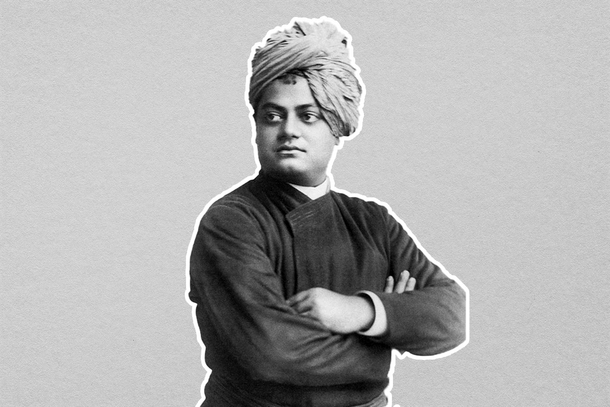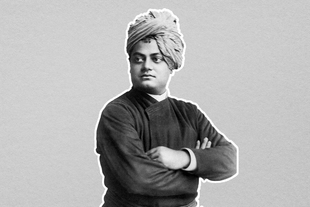Politics
India Had To Fight 'Secularism' Even To Build The Vivekananda Memorial
S Rajesh
May 29, 2024, 06:00 PM | Updated May 31, 2024, 01:46 PM IST
Save & read from anywhere!
Bookmark stories for easy access on any device or the Swarajya app.


Prime Minister Narendra Modi arrived in Kanyakumari, today, 30 May, to meditate at the Vivekananda Rock Memorial after the end of campaigning for the 2024 Lok Sabha elections.
He had done a similar meditation at Kedarnath in Uttarakhand in 2019.
While the Memorial is today a very well known spot, with visitors coming from all over the world, what is not widely known is how the memorial was built.
Those in favour of the Memorial had to fight opposition from Christian groups, seek support of a large number Parliamentarians, petition the Prime Minister and reach out to the Shankaracharya of Kanchipuram in order to make the then chief minister of Madras state, M Bhaktavatsalam finally relent and grant permission.
A warped sense of 'secularism', as in the case of many other things in this country, like President Rajendra Prasad being requested not to inaugurate the Somnath Temple, thus came in the way of this Memorial too.
During this entire saga, one man’s contribution proved crucial. He skilfully obtained the necessary support and money for the construction of the memorial. That man was Eknath Ranade, a former general secretary of the Rashtriya Swayamsevak Sangh (RSS).
How The Memorial Was Built
In 1962, around the time of Swami Vivekananda’s centenary, a committee was formed in Kanyakumari. The committee sought to build a memorial at the rock where Swamiji had meditated for a few days. At the same time, the Ramakrishna Mission in Chennai was also contemplating a memorial.
The rock is also significant for Hindus because of the presence of the footprints of Goddess Kumari.
But there were objections to this plan by sections of the Christian community, who called it St Xavier’s rock. They also put up a cross on the rock, which was visible from the shore.
Hindus protested against this. Around this time, the Dewaswom Board staked claim to the rock, citing its religious significance.
The committee then applied to the Board seeking permission for a memorial, a bridge from the land for pedestrians to visit the site and having a ferry service till the construction of the bridge.
The Board agreed, provided that everything was handed over to them after the construction. The ferry service was started, with help of fishermen from Kerala, as local fishermen (most of whom were Christians) opposed it.
A judicial probe was ordered. The cross was removed and the area was declared as Vivekananda Rock by the government.
The removal of the cross caused angst among the Christians. Section 144 was imposed in the area by the police and access to the rock was prohibited. Armed guards were posted.
The Board, which had earlier granted permission for the memorial asked the committee to write to the state government for its concurrence. This was done on instructions of the state government. The state government denied permission for a memorial on the rock and stated that it could be on the shore.
The then Chief Minister of Tamil Nadu, M Bhaktavatsalam, stated that only a stone tablet commemorating Swami Vivekananda's penance could be allowed on the rock. The committee accepted it and a stone tablet was placed in January 1963.
In the next few months, an all-India committee was formed. It also demanded a memorial. Swami Chinmayananda of the Chinmaya Mission made the first donation of Rs 10,000.
In May 1963, the stone tablet was demolished and thrown into the sea by some Christian miscreants.
Eknath Ranade Joins The Memorial Project
In August 1963, Eknath Ranade took over as the organising secretary of the committee. He had been the general secretary of the RSS earlier and had written a book on Vivekananda’s teachings.
Ranade's joining happened because some committee members felt that he would be helpful to the cause, given his knowlege and his contacts in Delhi. They had even approached the then chief of the RSS, M S Golwalkar, for Ranade's inclusion.
At this time, Chief Minister Bhaktavatsalam was saying that the then Union Culture minister Humayun Kabir, who was from Calcutta, was opposing a statue of Vivekananda on the site as it would 'spoil the natural beauty of the place'.
Having obtained the support of the Ramakrishna Mission for the memorial, Ranade then publicly stated in Calcutta that Kabir was opposing it for the reason stated above. There was a backlash against Kabir in his hometown.
After this Ranade met Chief Minister Bhaktavatsalam in Delhi. Bhaktavatsalam questioned the need for the memorial and the statue, stating that the statue would not be visible from the shore. Further, he said that he would not allow a bridge as it would spoil the beauty.
When Ranade said that they could have a 50 feet statue, which would be visible from the shore, Bhaktavatsalam asked for another scheme.
Around this time, Ranade also spoke to his friends and contacts in Delhi, most of whom were sympathetic. He was also in touch with Lal Bahadur Shastri, who supported the memorial. Shastri felt that Prime Minister Jawaharlal Nehru would be the person who could convince Bhaktavatsalam.
Here, Ranade got the idea of submitting a petition with the signatures of Parliamentarians to Nehru. Shastri supported the idea.
In three days, signatures of 323 MPs were collected and the petition was submitted in December 1963.
Nehru expressed his support and Bhaktavatsalam had to accede. But Bhaktavatsalam wanted a small memorial of 15X15 feet, while Ranade and others wanted a larger and grander memorial.
Ranade then approached the Shankaracharya of Kanchipuram to take his suggestions on the design as he was someone Bhaktavatsalam looked up to. The design suggested by the Shankaracharya was larger but as it was given by the seer himself, Bhaktavatsalam agreed.
When construction began, there came the challenge for funds.
Once again, Ranade came up with innovative measures like printing of lakhs of one-rupee folders, through which people across the country could donate sums as small as a rupee.
He also approached a number of state governments, including ones like Nagaland, where awareness about Swami Vivekananda was not much, and urged them to contribute. Industrialists, members of the armed forces, students unions, NGOs, educational institututions and the general populace—all sections of society contributed, making it a truly national project.
The memorial was finally inaugurated on 2 September, 1970 by the then President of India, V V Giri.
(For the story, the author has relied on excerpts of a book about the construction of the memorial, which has been published on Esamskriti. The book is based on the story narrated by Ranade himself).
S Rajesh is Staff Writer at Swarajya. He tweets @rajesh_srn.





